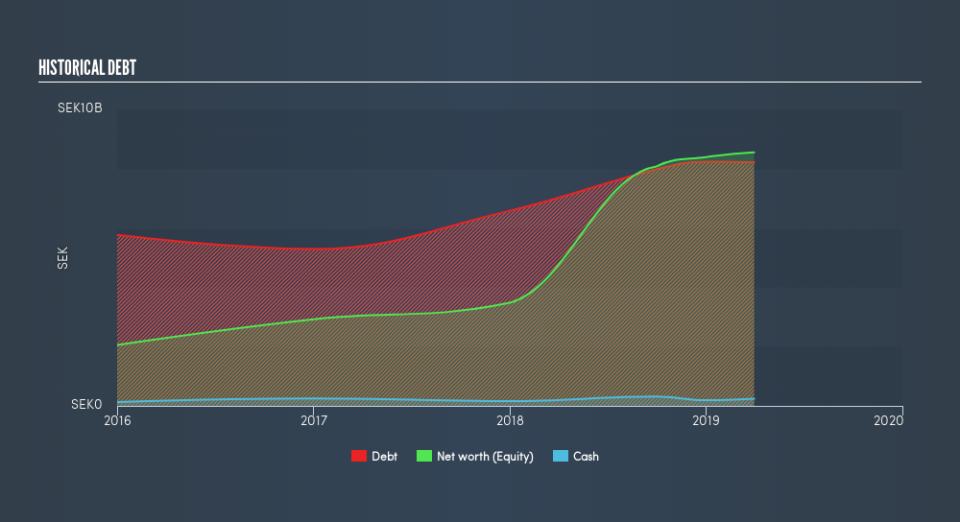Nyfosa AB (publ) (STO:NYF): Time For A Financial Health Check

Nyfosa AB (publ) (STO:NYF) is a small-cap stock with a market capitalization of kr10b. While investors primarily focus on the growth potential and competitive landscape of the small-cap companies, they end up ignoring a key aspect, which could be the biggest threat to its existence: its financial health. Why is it important? Evaluating financial health as part of your investment thesis is essential, since poor capital management may bring about bankruptcies, which occur at a higher rate for small-caps. The following basic checks can help you get a picture of the company's balance sheet strength. However, these checks don't give you a full picture, so I recommend you dig deeper yourself into NYF here.
Want to participate in a short research study? Help shape the future of investing tools and you could win a $250 gift card!
Does NYF Produce Much Cash Relative To Its Debt?
NYF has built up its total debt levels in the last twelve months, from kr6.6b to kr8.2b , which accounts for long term debt. With this growth in debt, NYF currently has kr240m remaining in cash and short-term investments , ready to be used for running the business. Additionally, NYF has produced cash from operations of kr1.4b over the same time period, leading to an operating cash to total debt ratio of 17%, meaning that NYF’s current level of operating cash is not high enough to cover debt.
Does NYF’s liquid assets cover its short-term commitments?
With current liabilities at kr1.4b, it seems that the business may not have an easy time meeting these commitments with a current assets level of kr302m, leading to a current ratio of 0.22x. The current ratio is the number you get when you divide current assets by current liabilities.
Is NYF’s debt level acceptable?
With a debt-to-equity ratio of 96%, NYF can be considered as an above-average leveraged company. This is a bit unusual for a small-cap stock, since they generally have a harder time borrowing than large more established companies. No matter how high the company’s debt, if it can easily cover the interest payments, it’s considered to be efficient with its use of excess leverage. A company generating earnings before interest and tax (EBIT) at least three times its net interest payments is considered financially sound. In NYF's case, the ratio of 8.21x suggests that interest is appropriately covered, which means that lenders may be willing to lend out more funding as NYF’s high interest coverage is seen as responsible and safe practice.
Next Steps:
Although NYF’s debt level is towards the higher end of the spectrum, its cash flow coverage seems adequate to meet debt obligations which means its debt is being efficiently utilised. Though its low liquidity raises concerns over whether current asset management practices are properly implemented for the small-cap. Keep in mind I haven't considered other factors such as how NYF has been performing in the past. You should continue to research Nyfosa to get a more holistic view of the stock by looking at:
Future Outlook: What are well-informed industry analysts predicting for NYF’s future growth? Take a look at our free research report of analyst consensus for NYF’s outlook.
Valuation: What is NYF worth today? Is the stock undervalued, even when its growth outlook is factored into its intrinsic value? The intrinsic value infographic in our free research report helps visualize whether NYF is currently mispriced by the market.
Other High-Performing Stocks: Are there other stocks that provide better prospects with proven track records? Explore our free list of these great stocks here.
We aim to bring you long-term focused research analysis driven by fundamental data. Note that our analysis may not factor in the latest price-sensitive company announcements or qualitative material.
If you spot an error that warrants correction, please contact the editor at editorial-team@simplywallst.com. This article by Simply Wall St is general in nature. It does not constitute a recommendation to buy or sell any stock, and does not take account of your objectives, or your financial situation. Simply Wall St has no position in the stocks mentioned. Thank you for reading.

